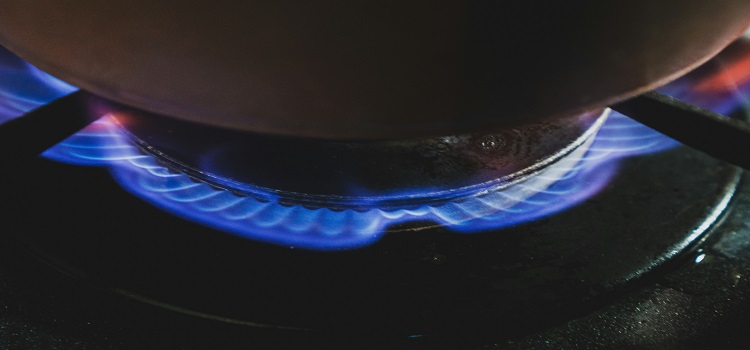As an Amazon Associate I earn from qualifying purchases.
Gas Stove Burner Too Hot on Low: Causes, Solutions, and Safety Tips
Introduction: Discovering that your gas stove burner is too hot on the low setting can be frustrating and potentially hazardous. Whether you’re trying to simmer delicate sauces or gently heat ingredients, having insufficient temperature control can disrupt your cooking experience. In this guide, we’ll explore the possible causes behind this issue, offer practical solutions to remedy it, and provide essential safety tips to ensure your cooking environment remains safe and efficient.

Causes of Gas Stove Burner Overheating: Several factors could contribute to a gas stove burner becoming excessively hot on the low setting, including:
- Gas Pressure: Inconsistent gas pressure from the supply line can result in irregular flame size and intensity.
- Burner Design: Some burner designs may not distribute heat evenly or allow for sufficient airflow, leading to overheating.
- Burner Clogs: Accumulated debris or food residue can obstruct the burner ports, causing uneven flame distribution and increased heat output.
- Regulator Issues: Malfunctioning regulators or valves can affect the flow of gas to the burner, resulting in unpredictable heat levels.
Solutions to Regulate Heat:
- Check Gas Supply: Ensure the gas supply valve is fully open and free from obstructions to maintain consistent pressure to the burner.
- Clean Burner Components: Regularly clean burner caps, ports, and gas lines to prevent clogs and ensure proper airflow.
- Adjust Flame Size: Use the stove’s control knobs to adjust the flame size gradually, finding the lowest setting that provides adequate heat without overheating.
- Inspect Regulator: If you suspect a regulator issue, consult a qualified technician to inspect and repair or replace the regulator as needed.
Safety Tips for Managing Heat:
- Monitor Cooking Closely: Keep a close eye on your cookware when using the stove, adjusting the heat as necessary to prevent burning or overheating.
- Use Heat Diffusers: Consider using heat diffuser plates or simmer mats to distribute heat more evenly and prevent hot spots on the cookware.
- Ventilate Properly: Ensure adequate ventilation in your kitchen to dissipate heat and minimize the risk of carbon monoxide buildup.
- Install Carbon Monoxide Detectors: Place carbon monoxide detectors near your gas stove to alert you to any potential gas leaks or combustion issues.
FAQs (Frequently Asked Questions):
- Why is my gas stove burner only heating on high?
- This could indicate a problem with the burner assembly, gas supply, or control knobs, requiring inspection and possible repairs.
- Can a dirty burner cause overheating?
- Yes, accumulated debris or grease on the burner components can obstruct airflow and cause the flame to burn hotter than intended.
- Is it safe to use a gas stove with overheating burners?
- It’s essential to address the underlying issue causing the overheating to prevent potential safety hazards, such as fire or gas leaks.
- Should I try to adjust the burner myself?
- Adjusting the burner settings can help regulate heat output, but it’s crucial to follow manufacturer guidelines and exercise caution to avoid damage or injury.
- Can I use a heat diffuser on all types of cookware?
- Heat diffusers are generally safe to use with most cookware types, but always check the manufacturer’s recommendations for compatibility.
- What should I do if I smell gas near my stove?
- If you detect the smell of gas, immediately turn off the stove, open windows and doors to ventilate the area, and contact your gas provider or emergency services for assistance.
- Why does my gas stove flame flicker or sputter?
- A flickering or sputtering flame could indicate an issue with the gas supply, such as low pressure or a blockage in the line, requiring inspection and maintenance.
- Can I convert my gas stove to a different fuel type?
- Converting a gas stove to a different fuel type, such as propane or natural gas, requires specialized equipment and professional installation to ensure safety and compliance with regulations.
- How often should I clean my gas stove burners?
- Regular cleaning of gas stove burners is recommended to prevent buildup of debris and ensure optimal performance. Aim to clean them at least once a month or as needed.
- Why does my gas stove burner produce a yellow flame?
- A yellow flame could indicate incomplete combustion due to improper air-to-fuel ratio or burner clogs, necessitating cleaning and adjustment to achieve a blue, steady flame.
Conclusion: Dealing with a gas stove burner that is too hot on the low setting requires careful troubleshooting and attention to safety precautions. By understanding the potential causes behind this issue and implementing the suggested solutions and safety tips outlined in this guide, you can regain control over your cooking environment and enjoy precise temperature regulation for all your culinary endeavors. Remember to prioritize safety and seek professional assistance if needed to address any underlying issues effectively.
As an Amazon Associate I earn from qualifying purchases.
Leave a Reply